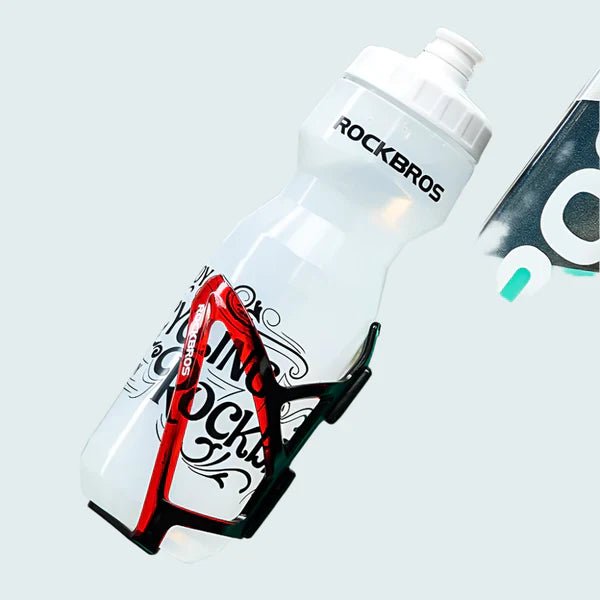
Hydration on the Go: Your Complete Guide to Cycling Water Bottles & Holders
Share
Introduction
If you’ve ever been halfway through a bike ride and felt your throat go dry, you already know how crucial hydration is. Whether you’re cycling for fun, fitness, or competition, having quick access to water is non-negotiable. And that’s where a good cycling water bottle and holder combo steps in.
This blog will walk you through why they’re important, what to look for, and how to make the most of them on every ride.
Why Hydration Matters for Cyclists
Cycling is a physically demanding activity that can quickly lead to dehydration. When you sweat, you lose fluids and electrolytes, and if you don’t replenish them, your body starts to slow down.
- Loss of focus: Dehydration affects mental clarity, which can be dangerous on the road.
- Reduced performance: Muscles need adequate hydration to perform efficiently.
- Risk of overheating: Proper hydration helps regulate your body temperature.
The Role of the Water Bottle & Holder
You might think any water bottle will do—but cycling requires a specific design.
- Easy access while riding: A good holder lets you grab and store the bottle without looking down.
- Secure grip: The holder keeps the bottle from bouncing out on rough terrain.
- Lightweight: Adds minimal weight to your ride.
Choosing the Right Cycling Water Bottle
- Size & Capacity – Most bottles are between 500ml to 750ml. Choose one that suits your ride length.
- Material – BPA-free plastic is common; insulated bottles keep drinks cold longer.
- Nozzle Design – A quick-sip or squeeze nozzle lets you drink without slowing down.
- Grip & Shape – Non-slip surfaces help when your hands are sweaty.
Choosing the Right Holder
- Material – Aluminum, carbon fiber, or reinforced plastic.
- Flexibility – A slightly flexible frame makes bottle retrieval easier.
- Mount Compatibility – Ensure it fits your bike frame’s bottle cage mounts.
- Retention Strength – It should hold the bottle securely, even over bumps.
Installation Tips
- Use the factory-drilled holes on your bike frame.
- Tighten screws firmly but don’t overdo it.
- Position the holder so it’s easy to reach with your dominant hand.
Maintenance Tips
- Wash your bottle after every ride to prevent mold growth.
- Rinse the holder occasionally to remove dirt and dust.
- Check screws periodically to ensure they haven’t loosened.
Pro Tips for Staying Hydrated While Cycling
- Take small sips every 15–20 minutes rather than chugging all at once.
- Use electrolyte tablets for longer rides.
- Pre-chill your bottle for hot-weather rides.
Final Thoughts
A high-quality cycling water bottle and holder isn’t just a convenience—it’s an essential piece of gear. Investing in the right one means you’ll ride longer, stay healthier, and perform better.
FAQs
Q1: Can I use a regular plastic bottle instead of a cycling bottle?
Yes, but it won’t be as easy to grip, and it may not fit your holder properly.
Q2: How often should I clean my cycling water bottle?
After every ride to prevent bacterial buildup.
Q3: Do all holders fit all bottles?
No. Most are designed for standard cycling bottles, but check dimensions to be sure.
Q4: Is an insulated bottle worth it?
Yes—especially for long summer rides where keeping drinks cold matters.
